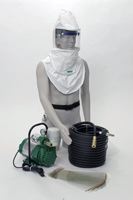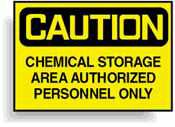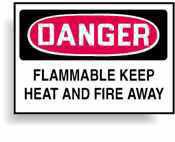 |
 |
| MSDS Topics |
Free Sites | FAQ's | Regulations | Glossary | Software | Suppliers |
| Books | Forum | Poll | Fun stuff | Quiz | Store | |
| MSDS and safety supplies | Search ALL our MSDS info | |||||
 | |||
 |
 |
 |
|
| Title: 01/16/1986 - Application of the Hazard Communication standard to a nuisance particulate. | |
| Record Type: Interpretation | Standard Number: 1910.1200 |
|
January 16, 1986
The Honorable Mack Mattingly Dear Senator Mattingly: This is in response to your letter of November 21, 1985, concerning application of the Hazard Communication Standard (HCS) (29 CFR 1910.1200) to nuisance particulate. Please accept my apology for the delay in response. As a matter of interpretation, the Occupational Safety and Health Administration (OSHA) has determined that if a substance is a nuisance particulate, and has no other discernible health or physical hazards, failure to comply with the information transmittal requirements of the HCS would result in a violation that would be characterized as de minimis. No penalties are assessed for de minimis violations, and no abatement of the condition is required. De minimis violations are issued when there is no direct or immediate relationship to safety and health. |  Work around dusts? Consider a complete supplied air respirator system like this one from Safety Emporium. |
In some cases a manufacturer may believe that a product is non-hazardous because of their understanding of the product's use. Paragraph (b)(2) of the standard speaks to this situation and reads as follows: "This section applies to any chemical which is known to be present in the workplace in such a manner that employees may be exposed under normal conditions of use or in a foreseeable emergency."
Accordingly, a product containing hazardous chemicals as defined in the standard may not require notification. The manufacturer must evaluate whether use of their product will result in exposure under normal conditions or in a foreseeable emergency. In other words, there must be some potential for exposure for a hazardous chemical to be covered by the HCS.
If the hazardous chemical in question is a food of food additive, it would be subject to the labeling requirements of the Food and Drug Administration. The OSHA requirements in terms of downstream transmittal of information would thus be limited to material safety data sheets being provided to manufacturing purchasers. These purchasers are required to have such sheets when the hazardous chemicals are present and pose a hazard to employees under normal conditions of use or in foreseeable emergencies. A copy of the material safety data sheet would have to be provided at the time of the initial shipment of the product, and whenever the information on the sheet is updated.
|
We regret any misunderstandings which may have resulted from our earlier communications. As you are aware, we met with your staff and representatives of Savannah Foods and Industries, Inc., on November 20, 1985 concerning these issues. After that meeting we notified you and Savannah Food Industries, Inc., of our preliminary opinion regarding this issue. Since that discussion we have completed a comprehensive review of the issues involved and found a need to realign our previous opinion. Again, we regret any inconvenience caused by the change in this interpretation. We hope this information is helpful to you. If we can be of further assistance, please do not hesitate to contact us. Sincerely, Patrick R. Tyson |  Encourage proper work habits with safety signs, labels and training from Safety Emporium. |
The Honorable David Smith
Director
Office of Health Compliance Assistance
Department of Labor
Room N 3101
200 Constitution Avenue
Washington, D.C. 20210
Dear Mr. Smith:
Thank you for meeting with my constituents, Joel Williams and Mike Kelly of Savannah Foods & Industries, yesterday afternoon concerning the Hazard Communication Standards (HCS) and the consequences of its implementation on the sugar industry.
One of the issues discussed in yesterday's meeting involved the recent OSHA Instruction CPL 2-2.38 of August 25, 1985 which included sucrose in the category of "nuisance dust", and thereby a hazardous material. It is my understanding that you, along with Mr. Anderson and Ms. Morris of your staff, stated that an interpretation and clarification of the HCS will be provided to my office before the close of business on Friday, November 22, 1985. This was based on the fact the ACGIH has stated it has no documentation showing that some of the examples of possible nuisance dusts, including sucrose, are hazardous chemicals.
|
I would also like to confirm the clarification that was given regarding the possible "explosivity" of sugar or other dusts and whether notifications must be sent by the sugar industry under the HCS. Savannah Foods contends, and it is my understanding you agree, that sugar does not come within the definitions of explosivity and would be properly regulated under the General Industry Standards of OSHA. Therefore, it is also my understanding your interpretation is that no MSDS communications are required by the sugar industry and instead, sugar manufacturers and their customers must comply with these standards. I appreciate your cooperation in this matter, and look forward to hearing from you. Sincerely Mack Mattingly |  Safety Emporium has all kinds of signs to keep your workplace safe. |
The official, public domain, OSHA version of this document is available at http://www.osha.gov/pls/oshaweb/owadisp.show_document?p_table=INTERPRETATIONS&p_id=19368&p_text_version=FALSE